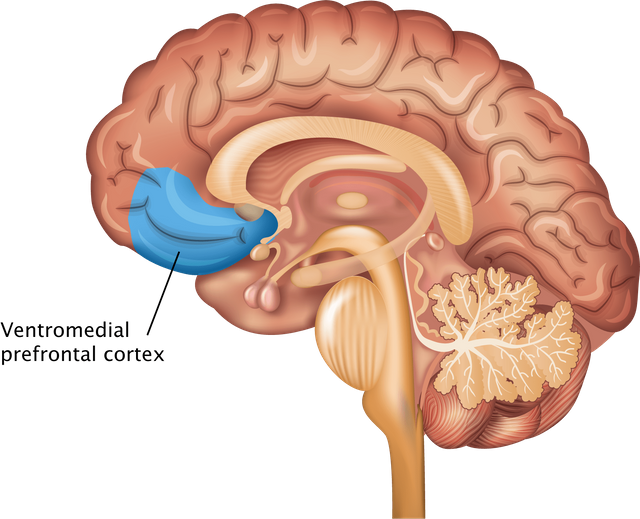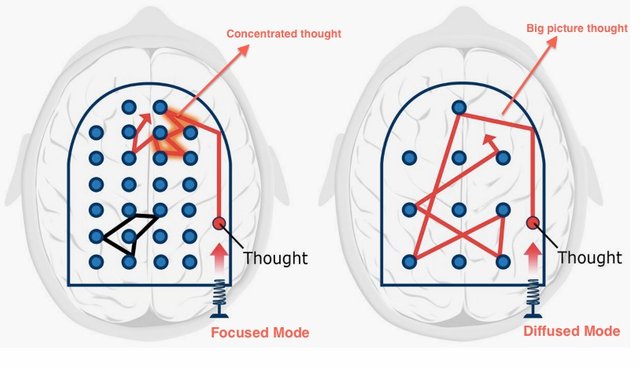Insights from the Coursera course - Learning How to Learn by Dr.Barbara Oakley and Dr.Terrence Sejnowski
Background
Somewhere along the way to adulthood, most of us lose our childlike wonder at discovering how the world works. Slowly but surely, the curious kid inside of us starves to death because we've been fed this subtle lie that good grades, a cert, and a decent job is the end goal.
But ever so often, a chance encounter presents itself which brings back to life our innate desire to be in awe of the world we live in; to want to ask why things work the way they do; to be a student all over again.
This is where I've been camping out for the past 5 years or so. A few experiences that resurrected my childlike curiosity. However as many people have learned, passion doesn't always translate well into action. And this is part of the reason I enrolled for this course on Coursera - to understand how learning takes place in a deeper sense (biologically), but also practical approaches that would help me increase my capacity for meaningful consumption of knowledge.
I first came across Dr. Barbara Oakley on the Knowledge Project (Shane Parrish) Podcast. In the interview, she described her inherent disdain for math and science from an early age, and how she studied employed learning techniques that helped her overcome this presupposed belief, to the point where she eventually earned a PhD in Engineering! Even through the interview, it was immediately apparent that Dr. Barbara has an extraordinary ability to communicate ideas clearly without ever sounding dull. She's the epitome of someone who seems to have never lost her child like wonder at discovering new ideas. I'll be discussing a few key insights that I've gained through the course so as to provide practical tips for those who are learners, and hopefully also whet your appetite to go on and take the course yourself (it's free!).
Two Modes of Thinking
The first concept introduced in the course is that we have two modes of thinking, focused mode, and diffused mode.
Focused Mode
We're in focus mode whenever we're fully engaged in concentrated thought. This mode utilizes concepts that we're already familiar with in order to solve new problems. A common misconception that a lot of people have is that learning only takes place in this focused mode. However, there is a second mode of thinking that's equally important.

Image Source
Diffused Mode
Diffused mode is one of our brain's many neural resting states; taking over whenever we're resting. This more relaxed state allows us to gain a bigger and broader perspective on the problem at hand, which is often needed whenever learning something new, or tackling a new problem.
Effective learning is achieved by shifting between these two modes of thinking. Great thinkers in the past intentionally found ways to actively switch over to their diffuse mode of thinking. Salvador Dali (the painter) had a unique practice of intentionally falling asleep for a very brief moment, which he credited as providing the inspiration for many of his paintings. [1]
A helpful analogy to frame these two modes of thinking is to imagine the brain as a pinball machine. The bumpers represent the neural connections that have been formed in our brain. Focused mode has the bumpers in closer proximity, which represents the quick firing of neurons among familiar pathways during this mode of thinking. Whereas the wide spaced bumpers in diffused mode paint a more subconcious top down approach to thinking.

Image Source
Application
Take breaks during periods of intense studying. Hammering away at a problem to no avail usually won't increase the possibility of solving it. Instead I've found that sleeping can be the most effective solution.
Memory and Chunks
Whenever we're learning something new, we can imagine holding it in our working memory (aka short term memory). As most people can attest to, working memory isn't particularly good, which is why we're often forgetting the names of people whom we've just met. Working memory only contains 4 slots, which represents items that can be held in focus at any one time. [2]
What we want to do instead is to move new concepts into long term memory. Long term memory can be pictured as a massive storage warehouse. Repetition and practice is key in consolidating new ideas to long term memory, as the brain needs time to form these neural connections.
Chunking
When learning something new, our brain compresses and groups ideas that are related together into what is known as chunks. This act of chunking solidifies the neural pathways that are associated with a particular concept. Once a concept is chunked, recalling and applying it becomes a lot easier; almost second nature. Often times a mastery of a topic or skill involves building many mini-chunks which are then compressed into a larger chunk.

Image Source
A helpful example for me to think about these abstract chunks is to recall back to when I first started learning to play football. Initially, even making a simple pass required intentional concentration in order to get my body posture and coordination right. Slowly, I moved on to learn other skills like how to dribble, to shoot, and to tackle. Over time, I no longer needed to intentionally think about posture or coordination, but instead these skills became second nature to me. Each technique mastered through repetition becomes compressed into a chunk, which enables the brain to seamlessly orchestrate these precise movements. My focus then moved on from the act of acquiring the proper technique to knowing when to use them.
Building Chunks
Dr. Oakley talked about 3 steps that are crucial in forming chunks:
- Focusing intently (Avoid any distractions)
- Learning something new consumes the already limited slots in working memory. When we're distracted, the ability of the brain to make meaningful connections is impeded because distractions are competing to occupy slots in our working memory.
- Understanding the concept clearly
- Understanding is akin to the super glue that holds the neural pathways together.
- Practice and repetition to gain mastery and context
- Mastery of a subject not only involves knowing it well, but also knowing how and when to apply it.
Practical Steps in Building Chunks
- Recall / Testing yourself - After learning about a concept, put away the material and try to recall the key points without referring back to the text. The process of recall itself can be helpful in solidifying the chunk. Personally, I try to write a small summary on a blank sheet of paper whenever I've studied a concept, and even after reading a chapter of any non fiction book.
- Avoid rereading / highlighting - Many studies have shown that we're prone to illusions of competence if we merely stick to this method of studying. We think we've understood the concepts because of all the effort and time put in. [3]
- Interleaving - Incorporate a variety of different topics when testing yourself. For example, after learning about multiplication, instead of merely attempting questions on multiplication, try to test yourself on previous topics (addition, subtraction, and division). By doing this, it helps build fluidity and flexibility in accessing our library of chunks. [4]
Wrap up of Part I
I initially hoped to include an extra section on how Procrastination works and the techniques to combat it, but I think I will conclude here and include it in a follow up post instead. Hope this proves to be an informative and practical read!
References
[1] S. Dalí, Dali - 50 secrets of magic craftmanship. New York: The Dial Press, 1948.
[2] N. Cowan, "The magical number 4 in short-term memory: A reconsideration of mental storage capacity", Behavioral and Brain Sciences, vol. 24, no. 1, pp. 87-114, 2001.
[3] Z. Reagh and M. Yassa, "Repetition strengthens target recognition but impairs similar lure discrimination: evidence for trace competition", Learning & Memory, vol. 21, no. 7, pp. 342-346, 2014.
[4] D. Rohrer, R. Dedrick and S. Stershic, "Interleaved practice improves mathematics learning.", Journal of Educational Psychology, vol. 107, no. 3, pp. 900-908, 2015.
I upvoted your post.
Keep steeming for a better tomorrow.
@Acknowledgement - God Bless
Posted using https://Steeming.com condenser site.
Downvoting a post can decrease pending rewards and make it less visible. Common reasons:
Submit
Thanks!
Downvoting a post can decrease pending rewards and make it less visible. Common reasons:
Submit
Thank you for sharing your posts with us. This post was curated by TeamMalaysia as part of our community support. Looking forward for more posts from you.
To support the growth of TeamMalaysia Follow our upvotes by using steemauto.com and follow trail of @myach
Vote TeamMalaysia witness bitrocker2020 using this link vote bitrocker2020 witness
Downvoting a post can decrease pending rewards and make it less visible. Common reasons:
Submit
You got a 12.83% upvote from @ocdb courtesy of @acidyo!
@ocdb is a non-profit bidbot for whitelisted Steemians, check our website https://thegoodwhales.io/ for the whitelist, queue and delegation info. Join our Discord channel for more information
If you like what @ocd does, consider voting for our witness through SteemConnect or on Steemit Witnesses
Downvoting a post can decrease pending rewards and make it less visible. Common reasons:
Submit
Thanks guys! @acidyo @ocdb
Downvoting a post can decrease pending rewards and make it less visible. Common reasons:
Submit